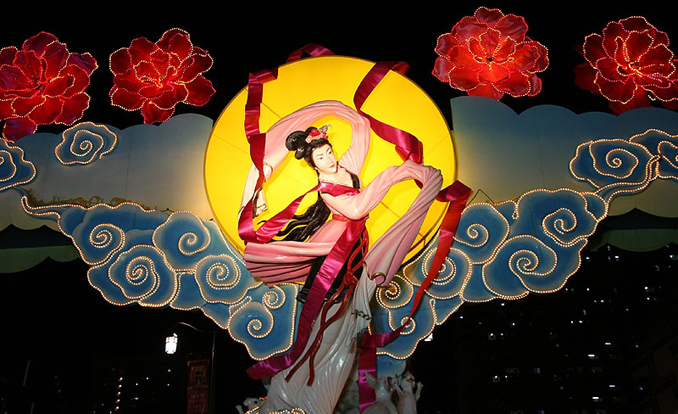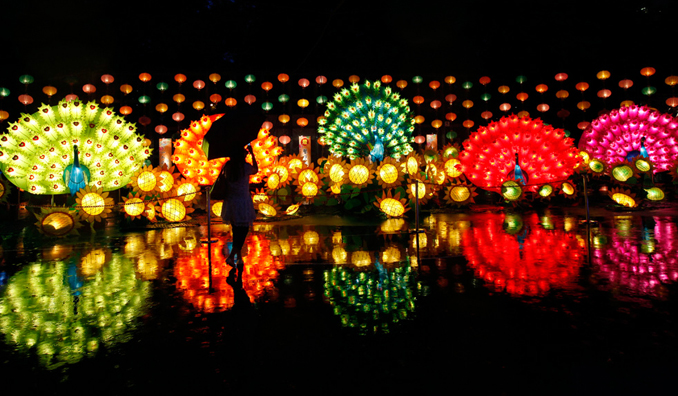Written by: Jin Zhilin
Posted on: September 18, 2013 |  | 中文
| 中文
It is a belief of Chinese folk custom that spring is the time to worship and autumn is the time to pay dues. Spring worship is to welcome all saints from heaven and earth, mainly the god of the sun, and autumn is for paying tribute to the generous, load carrying mother earth at the end of a harvest year. To offer respect to the land, the moon, and the mother's body is a culture that emanates from a matriarchal society.
 |
Eating moon cake is a custom of the Mid-Autumn Festival. The moon cake relief patterns are numerous and colorful, both in terms of art and cultural implication. Fairy tales told through moon cake relief patterns include A pairing fish, Baby with coiled hair, Sal tree of life, and Story of the jade hare from the moon palace.
Folk customs of moon worship vary from region to region in China. The most unforgettable I have seen was in central Shanxi. An altar was set up in the yard to burn incense and candles. Layers of fruit had been piled up on the altar as offerings to the moon fairy. Placed in the middle of the altar was a huge round cake, one-meter in diameter, showing patterns of lotus petals radiating from the center outwards and colorful flowers along with various figures, such as Monkey eating a peach. In between the lotus petals were jujubes, symbolic of life and propagation. The cake, likening the lotus to the moon and the mother's body, was a prayer for a bumper harvest, family reunion and prosperity.
From the ancient folk fables and unearthed articles, the sun is always connected with a golden crow or a legendary Fusang tree, while the moon is linked to the moon toad, the jade hare and the laurel. The sun and the moon always move around the sky, rising from the east and setting in the west. This is reflective of man’s basic knowledge of life and its perpetuity. The moon toad and the medicine mortar are female symbols in the family of the universe. The rabbit is the god of proliferation, and the Fusang, the Laurel and the Sal are the trees of life. Together, those symbols and images made up a fairy tale that has been told and passed down for thousands of years. Obviously, moon worship is the main theme of folk art works on the Mid-Autumn Festival.
 |
China is a multi-ethnic nation. Each nationality and every geographical region has its own customary festivities. The Miao ethnic group worships ancestors by thumping cows; the Yi and Bai ethnic groups have the Torch Festival. Other celebrations include the Pan King's Day of the Yao ethnic group, the Tibetan New Year (as pre their lunar calendar), the Oboo Festival in Inner Mongolia, and the Paiwan ethnic group's celebration of harvest in Taiwan. It is through this array of festivals that folk art is seeded, grows and blossoms.
You may also like: